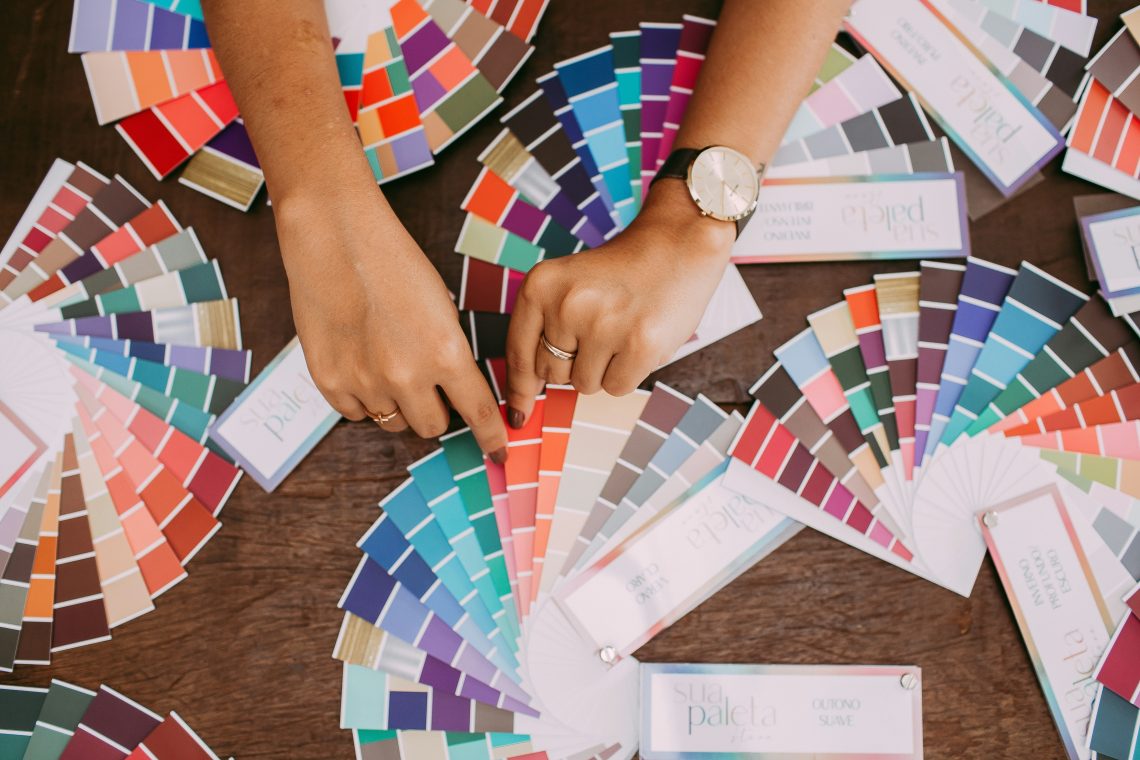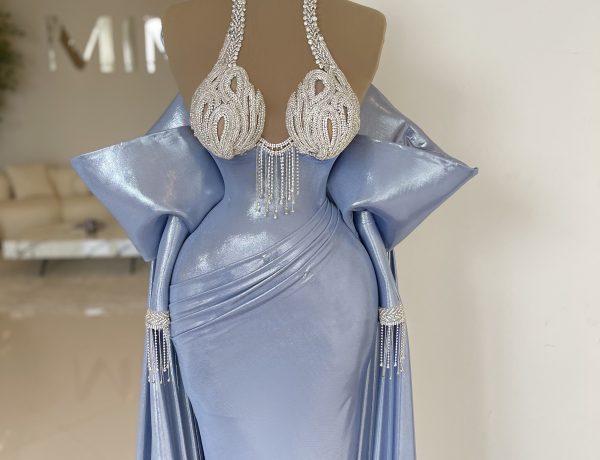Color analysis is a system that analyzes your natural coloring, such as skin tone, to identify a color palette that will flatter your appearance. Have you ever thought about why certain colors make you look glowing and active while others leave you feeling washed out or gloomy?
The answer might lie in color analysis, a system that identifies a flattering color palette based on your natural coloring. But with professional consultations often costing a pretty penny, you might wonder: can you achieve the same results at home?
Let’s explore the possibility of DIY color analysis.
Understanding Color Analysis
Color analysis delves deeper than simply liking a particular color. It’s a personalized approach to identifying which colors harmonize with your natural coloring. A specific color pattern is identified by assessing your skin color, hair texture and natural shade, and eye color, along with their underlying warm or cool tones.
This palette considers three key aspects of color: hue (the actual color itself), value (lightness or darkness), and chroma (intensity or brightness). These factors determine whether a color will enhance your features, making you look radiant and youthful, or detract from them, leaving you looking dull. Understanding your color analysis allows you to build a wardrobe that flatters your beauty and increases your confidence.
According to Jing Daily, although the color analysis started in the 1980s, it is now trending like never before. Netizens are going crazy over modern social media sites like TikTok and Instagram over color analysis videos. Some influencers are creating seasonal color analysis content and getting over 30 million video views.
DIY Color Analysis Methods
Are you tempted to unlock your best colors but on a budget? Fear not! DIY color analysis offers a path to self-discovery. There are two chief methods: draping and digital analysis. Draping involves holding different colored fabrics against your bare face in natural light. Perceive carefully how each color affects your skin tone, eye vibrancy, and overall balance. Does it brighten your complexion or emphasize shadows?
The other option is digital analysis, where you upload photos and answer questions about your coloring on websites or apps. While these tools can be a supportive initiative point, results may differ. As per Your Color Guru, consider referring to a professional color expert for a more definitive answer. They can guide you through the draping process with a trained eye and ensure a personalized color palette that flatters you uniquely.
If you are seeking professional color analysts online, you can get your color analysis here and unlock a world of confidence in your choices.
Identifying Your Undertone
Unraveling your undertone is key to a successful color analysis. Unlike the color you see on the top of your skin, your undertone is the subtle hue underneath your skin’s surface. Look at the veins on your wrist in daylight. Greenish veins hint at warm undertones with golden or peachy hues, while blue or purple veins suggest cool undertones with pink or rosy characteristics.
If your veins appear mixed or invisible, you might have a neutral undertone, where both warm and cool tones are present in equal measure. Alternatively, observe how your skin reacts to sun exposure. Do you tan easily and rarely burn (warm), burn easily and tan minimally (cool), or experience both (neutral)? Identifying your undertone provides a foundation for building your color palette, ensuring you choose colors that complement your natural coloring.
Assessing Your Best Colors
After identifying your undertone, it’s time to assess which colors truly make you shine. Hold various colored fabrics against your bare face in natural daylight. Look beyond your personal favorite and focus on how the color interrelates with your complexion. Does it even out any redness or sallowness? Does it brighten your eyes and make them appear more vibrant?
Colors that create this harmonious effect are likely part of your best color palette. Conversely, colors that make your skin look dull or washed out or emphasize imperfections are best left on the rack.
According to Healthline, if your undertone is cool, you can go for green, pink, purple, and red colors. If you have a warm undertone, golden, yellow, and peach hues would look great on your skin. If you have a neutral undertone, you can choose colors from both types, and they will go very well with your skin.
Remember, the ideal colors will complement your natural coloring, not compete with it. This assessment process might take some time and experimentation. The payoff is a wardrobe that flatters your unique beauty and boosts your confidence every time you step out the door.
Tips for DIY Color Analysis Success
Achieving DIY color analysis success hinges on a few key strategies. Firstly, ensure good lighting. Natural daylight is crucial for accurately assessing how colors interact with your features. Secondly, cleanse your face of makeup, allowing your natural coloring to shine through. Thirdly, be patient and methodical. Don’t rush the draping process – take your time comparing different colors and observe their subtle effects. Fourthly, enlist a trusted friend for a second opinion.
Their objective perspective can be invaluable in confirming how a color makes you look. Finally, remember there’s no single “right” answer. According to the New York Times, you will have to spend as much as $500 to find out your color analysis. But do you think it’s worth it? The answer is yes if you are a social media-savvy person and like to follow trends.
While color analysis provides a roadmap, your personal preferences matter. If a color outside your palette sparks immense joy, embrace it. The goal is to feel confident and beautiful, and sometimes, a touch of your favorite shade can do just that.
Frequently Asked Questions
How accurate are DIY color analysis methods compared to professionals?
DIY color analysis methods can be a helpful starting point but may not be as accurate as professional analysis. A trained eye can identify subtle variations in coloring that can lead to a more precise and flattering palette.
Can DIY color analysis enhance my appearance with clothing and makeup choices?
Yes, DIY color analysis can enhance your appearance. By choosing colors that complement your coloring, you can create a more harmonious and flattering look for both clothing and makeup. However, for the best results, consider consulting a professional color analyst for a more precise palette.
What are common mistakes to avoid with DIY color analysis?
Common mistakes to avoid include relying solely on artificial light, neglecting to cleanse your face of makeup, and rushing the draping process. A second opinion from a trusted friend can also be helpful, and remember that personal preference can play a role. The ultimate goal is to feel confident and beautiful in what you wear.
To conclude, can you do your color analysis? The answer is yes, with some caveats. DIY methods like draping and digital tools offer a budget-friendly way to explore your color palette. By understanding your undertone and assessing your seasonal color, you can build a wardrobe that enhances your natural beauty and boosts your confidence.
Read more lifestyle articles at ClichéMag.com
Images provided by Deposit Photos, BingAI, Adobe Stock, Unsplash, Pexels, Pixabay & Creative Commons


